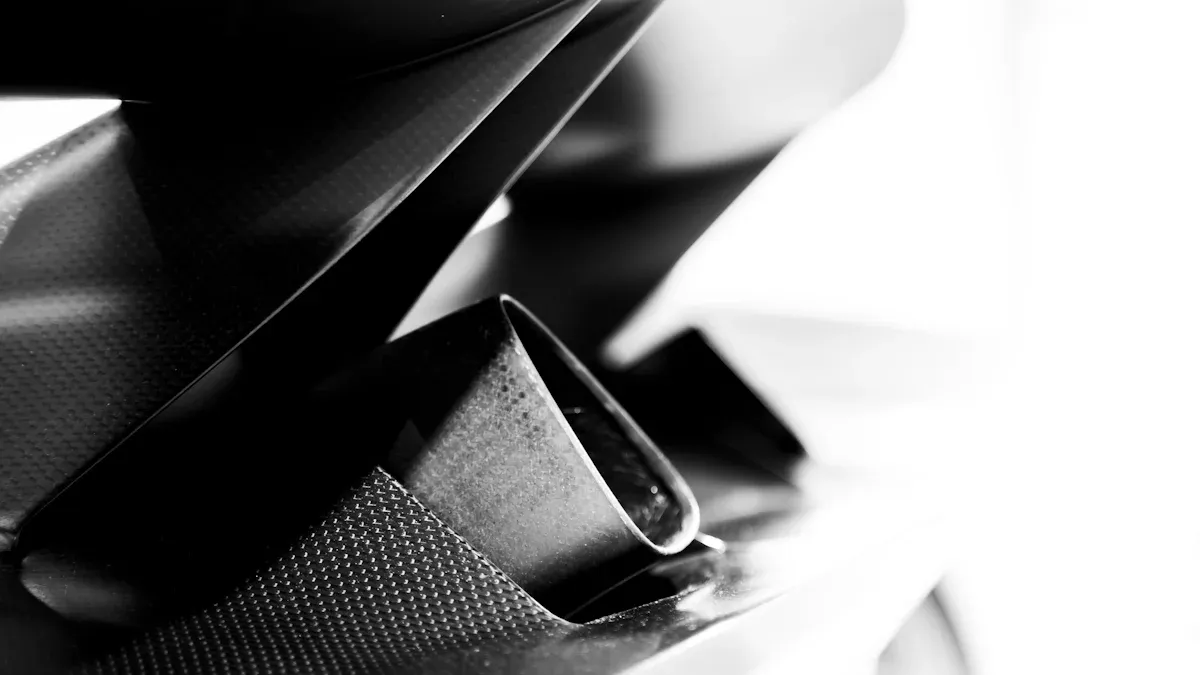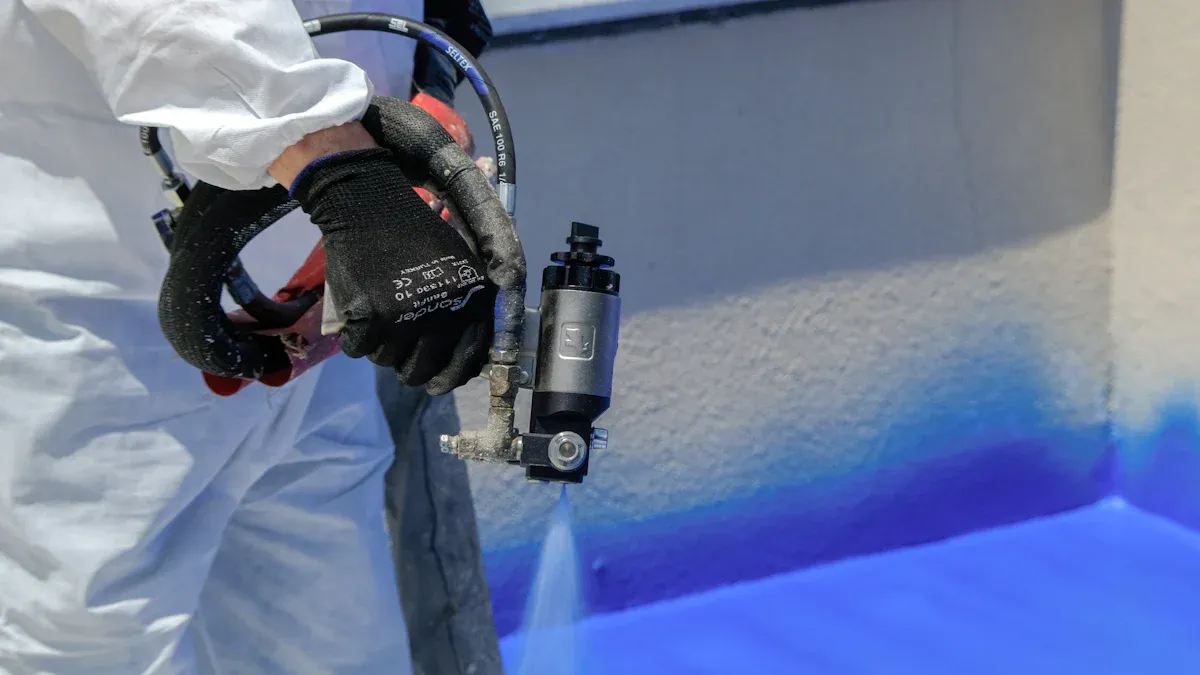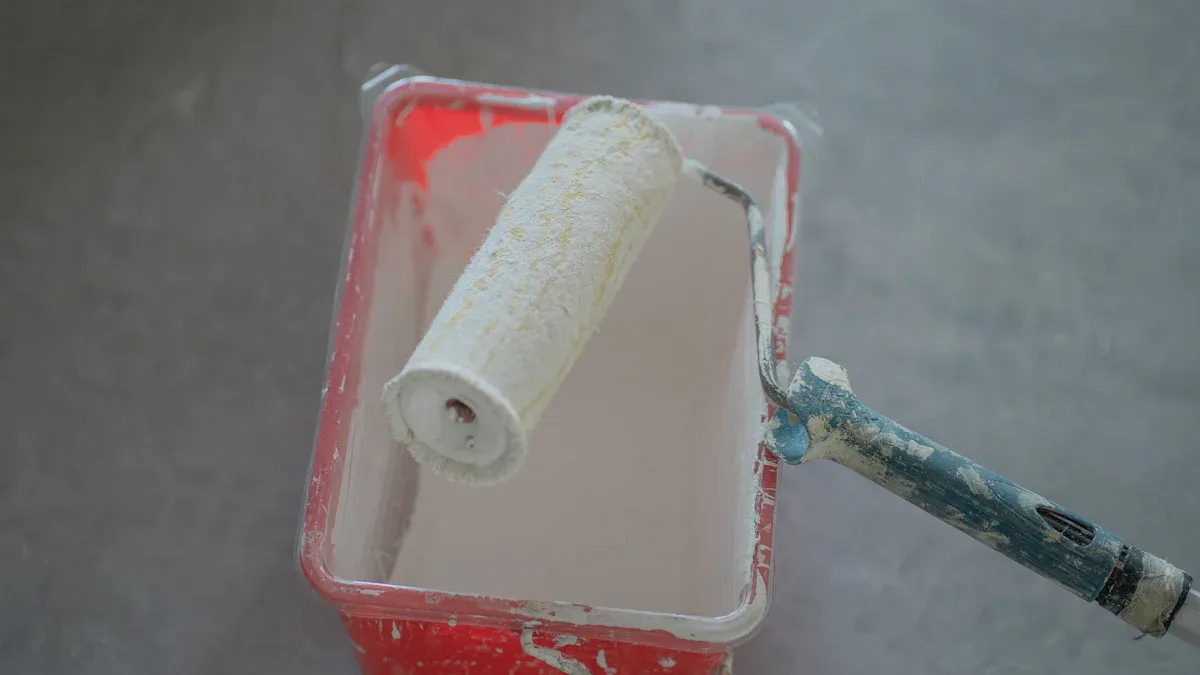
Advanced coatings transform the performance of each graphite susceptor. Engineers see improved results when applying these coatings to high-purity graphite components and CVD graphite parts. Carbon-based susceptors now resist extreme temperatures and harsh chemicals. These changes deliver longer life and greater reliability in demanding industrial settings.
Key Takeaways
- Advanced coatings protect graphite susceptors from heat and chemicals, making them last longer and work more reliably in tough industrial settings.
- Coatings like tantalum carbide and silicon carbide improve thermal stability and prevent contamination, helping industries produce higher-quality products with less downtime.
- Using coated susceptors lowers maintenance costs and supports cleaner, more efficient manufacturing in industries like semiconductors, LEDs, and renewable energy.
Why Coatings Matter for Graphite Susceptors
The Role of Graphite Susceptors in Industry
Graphite susceptors play a vital role in many high-tech industries. They act as heat absorbers and distributors in processes like chemical vapor deposition (CVD) and epitaxy. These processes require precise temperature control. Engineers rely on graphite susceptors to deliver uniform heating. This uniformity ensures consistent product quality in semiconductor manufacturing, LED production, and advanced materials processing.
Note: The unique structure of graphite allows it to withstand rapid temperature changes. This property makes it a preferred choice for demanding thermal environments.
Key Performance Challenges Without Coatings
Uncoated graphite susceptors face several challenges in harsh industrial settings. Exposure to high temperatures can cause oxidation, which weakens the material. Chemical reactions with process gases may lead to contamination or erosion. Over time, these issues reduce the susceptor’s lifespan and reliability.
Common challenges include:
- Oxidation at elevated temperatures
- Chemical attack from reactive gases
- Particle generation that can contaminate products
A lack of protective coatings often results in frequent maintenance and unexpected downtime. These problems increase operational costs and disrupt production schedules.
Breakthroughs in Graphite Susceptor Coating Technologies

Tantalum Carbide (TaC) Coatings
Tantalum carbide coatings set a new standard for protecting graphite susceptors. These coatings form a hard, dense layer that resists wear and corrosion. Engineers choose TaC because it handles extreme temperatures without breaking down. This property makes TaC ideal for semiconductor and LED manufacturing. The coating also prevents unwanted chemical reactions on the susceptor surface.
Tip: Tantalum carbide coatings help reduce maintenance by extending the time between replacements.
Silicon Carbide (SiC) Coatings
Silicon carbide coatings offer strong protection against oxidation. They create a barrier that shields the graphite susceptor from oxygen and harsh chemicals. SiC coatings also improve thermal conductivity, which helps maintain even heating during production. Many industries rely on SiC for its ability to withstand rapid temperature changes.
- Key benefits of SiC coatings:
- High resistance to oxidation
- Improved heat transfer
- Long-lasting surface protection
Triple-Layer and Hybrid Coating Materials
Triple-layer and hybrid coatings combine several materials to boost performance. These advanced coatings use layers such as TaC, SiC, and other ceramics. Each layer serves a specific purpose, like blocking chemicals or improving heat resistance. Hybrid coatings adapt to different industrial needs and offer greater flexibility.
A comparison of coating types:
| Coating Type | Main Benefit | Typical Use Case |
|---|---|---|
| TaC | Extreme durability | Semiconductor tools |
| SiC | Oxidation resistance | High-temp reactors |
| Triple-Layer/Hybrid | Custom performance | Specialized processes |
Performance Improvements from Advanced Coatings

Enhanced Thermal Stability
Advanced coatings help each graphite susceptor handle higher temperatures. These coatings form a strong barrier that keeps heat from damaging the graphite. Engineers see fewer cracks and less warping during rapid heating and cooling cycles. This stability allows industries to run processes at higher temperatures without risking equipment failure.
- Coated susceptors maintain shape and strength even in extreme heat.
- Production lines experience fewer interruptions due to thermal damage.
- Operators can push temperature limits to improve product quality.
Note: Enhanced thermal stability leads to more consistent results in semiconductor and LED manufacturing.
Superior Chemical Resistance
Chemical resistance is critical for graphite susceptors in harsh environments. Advanced coatings block corrosive gases and liquids from reaching the graphite surface. This protection stops chemical reactions that can weaken or contaminate the susceptor.
A table below shows how coatings improve chemical resistance:
| Coating Type | Protection Level | Common Chemicals Resisted |
|---|---|---|
| TaC | Very High | Chlorine, fluorine, acids |
| SiC | High | Oxygen, water vapor, alkalis |
| Hybrid | Customizable | Multiple aggressive agents |
Engineers report fewer cases of contamination and erosion. This improvement means cleaner production and higher yields.
Increased Durability and Service Life
Durability and long service life are top priorities for any graphite susceptor. Advanced coatings make the surface harder and more resistant to wear. This extra protection reduces the need for frequent replacements.
Key benefits include:
- Lower maintenance costs
- Fewer shutdowns for repairs
- Longer intervals between part replacements
Tip: Investing in coated susceptors helps companies save money over time and keeps production running smoothly.
These improvements allow industries to rely on their equipment for longer periods. As a result, they achieve better efficiency and higher output.
Real-World Applications and Industry Impact
Semiconductor Manufacturing
Semiconductor companies depend on advanced coatings to keep their production lines running smoothly. Engineers use graphite susceptors in high-temperature reactors to heat silicon wafers. These coatings help prevent contamination and keep the surface clean. As a result, chip makers see fewer defects and higher yields. Many factories report longer equipment life and less downtime. This improvement leads to lower costs and better product quality.
Renewable Energy Systems
Renewable energy systems, such as solar panel manufacturing, also benefit from coated susceptors. These systems often require precise temperature control during the creation of photovoltaic cells. Coated graphite susceptors help maintain stable temperatures and resist chemical attack from process gases. This stability supports the production of more efficient solar cells. Companies in this sector value the reliability and long service life that advanced coatings provide.
LED Production and Advanced Photonics
LED makers use graphite susceptors in the growth of crystal layers. These processes demand clean environments and exact temperatures. Advanced coatings reduce the risk of particle generation and chemical contamination. As a result, LED and photonics manufacturers achieve brighter, longer-lasting products. The industry continues to adopt new coating technologies to meet strict quality standards.
Note: Many industries now see coated susceptors as essential for modern, high-performance manufacturing.
Overcoming Challenges with New Graphite Susceptor Coatings
Addressing Oxidation and Corrosion
Oxidation and corrosion present major threats to the performance of graphite susceptors. High temperatures and reactive gases can attack the surface, causing it to weaken or break down. New coating technologies use materials like silicon carbide and tantalum carbide to create a strong barrier. These coatings block oxygen and chemicals from reaching the graphite. As a result, the graphite susceptor keeps its strength and shape during long production runs.
Engineers often select coatings based on the specific environment. For example, in processes with high oxygen levels, silicon carbide works well. In more corrosive settings, tantalum carbide offers better protection. This targeted approach helps companies reduce equipment failure and extend service life.
Tip: Regular inspection of coated susceptors helps detect early signs of wear and ensures maximum protection.
Reducing Contamination and Particle Generation
Contamination and particle generation can lower product quality in sensitive industries. Advanced coatings create a smooth, hard surface on the graphite susceptor. This surface resists flaking and particle release, even under stress. Clean surfaces mean fewer defects in products like semiconductors and LEDs.
A quick comparison of coating benefits:
| Challenge | Coating Solution | Result |
|---|---|---|
| Particle release | Dense ceramic layer | Cleaner production |
| Chemical attack | Hybrid coatings | Less contamination |
Engineers report fewer shutdowns and higher yields when using coated susceptors. These improvements support reliable, high-quality manufacturing.
Future Trends in Graphite Susceptor Coatings
Focus on Sustainability and Eco-Friendly Materials
Sustainability shapes the future of industrial coatings. Manufacturers now explore eco-friendly materials for coating processes. They seek to reduce hazardous waste and energy use. Many companies test water-based solutions and recyclable ceramics. These options help lower the environmental impact of each graphite susceptor. Some research teams also develop coatings that use fewer rare metals. This shift supports global efforts to create greener manufacturing.
Note: Eco-friendly coatings can improve workplace safety and meet stricter regulations.
Integration of Smart and Multifunctional Coatings
Engineers want coatings that do more than protect. Smart coatings can sense temperature changes or chemical exposure. Some new materials change color when they detect damage. Others can self-heal small cracks. These features help operators spot problems early. Multifunctional coatings may also combine thermal protection with electrical conductivity. This trend leads to more reliable and efficient graphite susceptor performance.
- Examples of smart coating features:
- Color-changing indicators
- Self-healing surfaces
- Built-in sensors
Advances in Coating Application Techniques
Modern application techniques improve coating quality and consistency. Plasma spraying and atomic layer deposition allow for thinner, more uniform layers. These methods reduce waste and save material. Automated systems now control temperature and pressure with high precision. As a result, each graphite susceptor receives optimal coverage. These advances help industries achieve better results with less downtime.
- Advanced coatings raise the standard for Graphite Susceptor performance.
- New materials help companies achieve longer equipment life and better reliability.
- Ongoing research brings more efficient and sustainable solutions.
Investing in these technologies keeps manufacturers ahead in high-tech industries.
FAQ
What industries benefit most from advanced graphite susceptor coatings?
Semiconductor, LED, and solar panel manufacturers see the greatest benefits. These industries require high purity, thermal stability, and long equipment life.
How often should companies inspect coated graphite susceptors?
Engineers recommend regular inspections every production cycle. Early detection of wear helps prevent equipment failure and reduces costly downtime.
Can advanced coatings reduce maintenance costs?
Yes. Advanced coatings increase durability and service life. Companies spend less on repairs and replacements, which lowers overall maintenance expenses.


